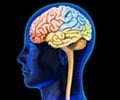Broca's language region, the motor centre for speech is comprised of several molecularly and cellularly different cortical areas, a discovery that scientists have made.

Our ability to form phonemes and words is controlled in Broca's region. According to the maps of the cerebral cortex developed by Korbinian Brodmann, which are still in use today, Broca's region is composed of two areas.
But recently, researchers have begun to question this subdivision.
"Lesions in Broca's region could result in a dozen different language problems.
For example, in articulation but also in comprehension or in grammar, as linguistic studies have shown. This tends to suggest a much more complexly structured centre of language than was previously believed," said Professor Katrin Amunts, brain researcher at Forschungszentrum Julich and first author of the study.
The scientists therefore decided to take a closer look at the cytoarchitecture and distribution of different receptors in Broca's region.
Advertisement
If the distribution of receptors is different in these regions, then the functions of the brain at these locations must also be different.
Advertisement
The study shows, for example, a clear difference in the distribution of one receptor between the Broca areas of the two cerebral hemispheres and slight differences in the case of the other receptors.
Further studies are required to determine whether this is the molecular basis for the different clinical findings in patients with lesions in Broca's region either exclusively in the left or right brain hemisphere.
Patients with lesions in the left brain hemisphere completely lose their ability to speak, while those with lesions in the right-hand side can still articulate correctly but lose their speech melody.
"One of the tasks for the future is to conduct a detailed functional analysis of the new organization of Broca's region and to investigate the interaction of the previously unknown areas," says Amunts.
The discovery in question of several molecularly and cellularly different cortical areas in Broca's language region and in neighbouring areas shows that our faculty of speech is actually embedded in a much more differentially developed brain landscape than we have believed for the past 150 years.
The findings are not just important for language research and the diagnosis and treatment of strokes.
They also alter the neurobiological basis for current discussions on the evolutionary development of language, speech training and language disorders.
Source-ANI













